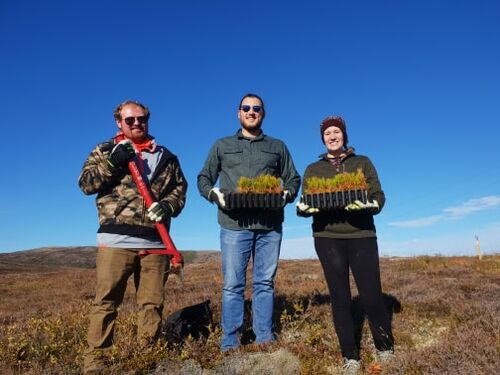Reforestation in Ulfjotsvatn
ISE students join the U.S. Embassy, Landvernd and the Icelandic Forestry Association in reforestation efforts
At the end of September, the U.S. Embassy in Iceland teamed up with Landvernd and the Icelandic Forestry Association to lead about 60 volunteers in planting over 1,500 trees at Ulfljotsvatn.

It is estimated that when Vikings first arrived in Iceland, the island was up to 50% vegetated. Today that number has gone down to less than 2%. Reforestation can reduce Iceland's carbon footprint, promote biodiversity and help agriculture.
Iceland's location on a continental rift has made it prone to volcanic activity. Frequent eruptions cover the ground with volcanic rock and ash. Combine this with strong winds and the result is loose soil that is difficult to vegetate and can damage property. Reforestation is necessary to make farming feasible and to prevent soil erosion.
At this tree planting event, the forestry association evaluated a plot of land and had volunteers plant birch and lodgepole pine. These tree species were chosen because they are indigenous to Iceland and can withstand poor soil conditions
After planting over 1,500 tree saplings it was estimated that the trees would capture about 320 tonnes of CO2 over the next 60 years. To learn more about reforestation in Iceland see the following link.
